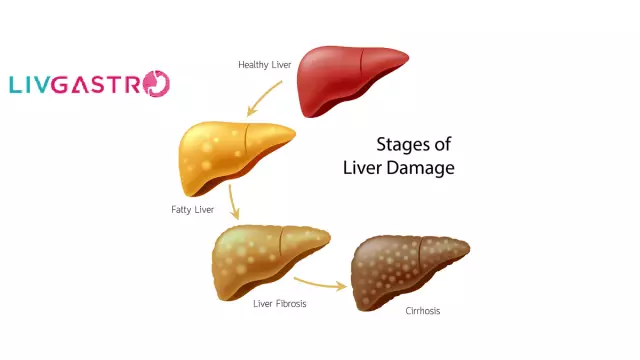- Author Rachel Wainwright [email protected].
- Public 2023-12-15 07:39.
- Last modified 2025-11-02 20:14.
Dystonia

Motor, in which spasmodic or constant muscle contraction occurs, forcing the patient to forcibly take pathological postures and reproduce uncontrolled movements, is called dystonia.
The cause of the disease is a violation of the interaction between activation and relaxation of muscles, due to which there is an uncontrolled and involuntary contraction of both individual muscles and entire groups.
Modern medicine cannot yet answer the question of why this interaction is disturbed, therefore it is impossible to say unequivocally about the causes of dystonia syndrome. The disease does not have specific electrophysiological, biochemical, pathomorphological and other diagnostic markers.
According to statistics, about 1% of the world's population suffers from dystonia syndrome. Moreover, in women, the disease occurs many times more often than in men.
Forms of dystonia
The etiological classification of the disease in our time has not yet been fully developed, basically it includes 4 sections, however, in some sources you can find another fifth form of the disease - pseudo-dystonia. It is understood as a syndrome that occurs against the background of diseases that may resemble dystonia, however, in fact, they are not (Sandifer, Isaacs syndrome, etc.)
Primary and secondary dystonia are distinguished - the first is not associated with other neurological abnormalities, the second develops against the background of damage to the tissue of the brain and spinal cord, peripheral nerves and as a result of exposure to the external environment.
Primary dystonia can manifest itself both in childhood and in adulthood; it is a group of hereditary diseases that can be transmitted by an autosomal recessive, autosomal dominant or X-linked mode of inheritance and combined with tremor, parkinsonism or myiclonus.
Secondary dystonia can occur as a result of hereditary metabolic diseases, trauma, carbon monoxide poisoning, stroke, or subdural hematoma.
On the basis of prevalence in medicine, the following forms of dystonia syndrome are distinguished:
- Segmental - in which the symptoms of dystonia are observed in two adjacent parts of the body;
- Focal - the disease is observed in any one part of the body, it is designated by the area affected by the syndrome (cranial, axial, cervical, etc.);
- Generalized - in which the patient has the ability to weaken involuntary movements with corrective gestures;
- Hemidystonia is a manifestation of a syndrome consisting of crural and brachial dystonia on one half of the body;
- Multifocal - with this form of dystonia, symptoms are distributed in two or more parts of the body that are not adjacent to each other.
In turn, focal dystonia is subdivided into the following forms:
- Cervical;
- Blepharospasm;
- Crural;
- Writing spasm;
- Oromandibular;
- Spastic.
On the etymological basis, such a form of the disease as Dystonia-plus is distinguished, which is understood as the union of a group of diseases that do not belong to the primary and secondary forms.
Dystonia symptoms
The clinical manifestations of the syndrome depend on the etiology of the disease. So the signs of dystonia, depending on the location of the lesion, are:
- Feet - pronounced flexion of the toes, extension and twisting of the limb;
- Brushes - flexion with overextension of the fingers;
- Neck and trunk - rotational movements;
- Facial area - protruding the tongue, shutting the eyes, forced closing or opening the mouth, stretching the lips.
Signs of dystonia are also conditions in which the patient adopts unnatural disabling positions. In all cases, these manifestations completely disappear during relaxation and during sleep.
Diagnosis of dystonia
It is possible to diagnose the primary form of the disease only clinically; it is possible to recognize the signs of secondary dystonia only after a wide range of studies have been carried out according to the indications.
In many cases, genetic examinations, cytological and biochemical analysis of tissue biopsy, biochemical studies and other paraclinical diagnostic methods are required.
A detailed interview of the patient by the attending physician is also required, since this significantly increases the chances of an adequate clinical diagnosis of the disease.
Dystonia treatment
In case of illness, medication or surgical treatment is used. Initially, the hospital checks the body's response to treatment for dystonia with Levodopa or dopamine receptor agonists. If it is negative, anticholinergics, carbamazepine, baclofen, and long-acting benzodiazepines are used.

Trial treatment with different drugs should be carried out systematically to determine precisely whether such therapy is having the desired effect. The use of trial drug treatment of dystonia in childhood should last at least six months, since the therapeutic effect in this group of patients may not appear immediately.
Surgical treatment of dystonia is a stereotaxic thalamotomy or pallidotomy, which are used only in the most severe cases. Focal dystonia is treated by local injection of botulinum toxin every two or four months into the muscles involved in hyperkinesis. Side effects with this type of treatment are minimized.
Dystonia is understood as a motor neurological disorder, due to which spasmodic or constant muscle contractions occur, forcing a person to take unnatural postures and reproduce uncontrolled movements in various parts of the body. The disease requires a thorough clinical diagnosis with a series of tests and studies, as well as the appointment of adequate drug or surgical treatment.
YouTube video related to the article:
The information is generalized and provided for informational purposes only. At the first sign of illness, see your doctor. Self-medication is hazardous to health!






